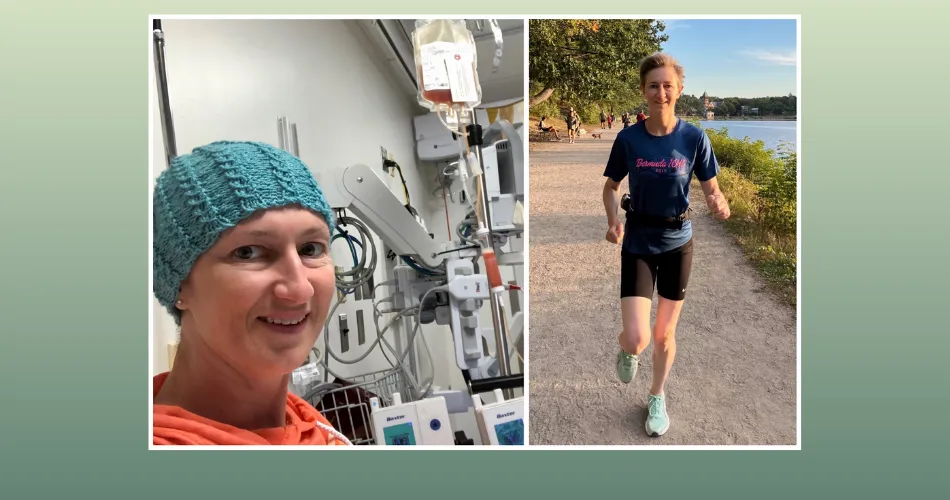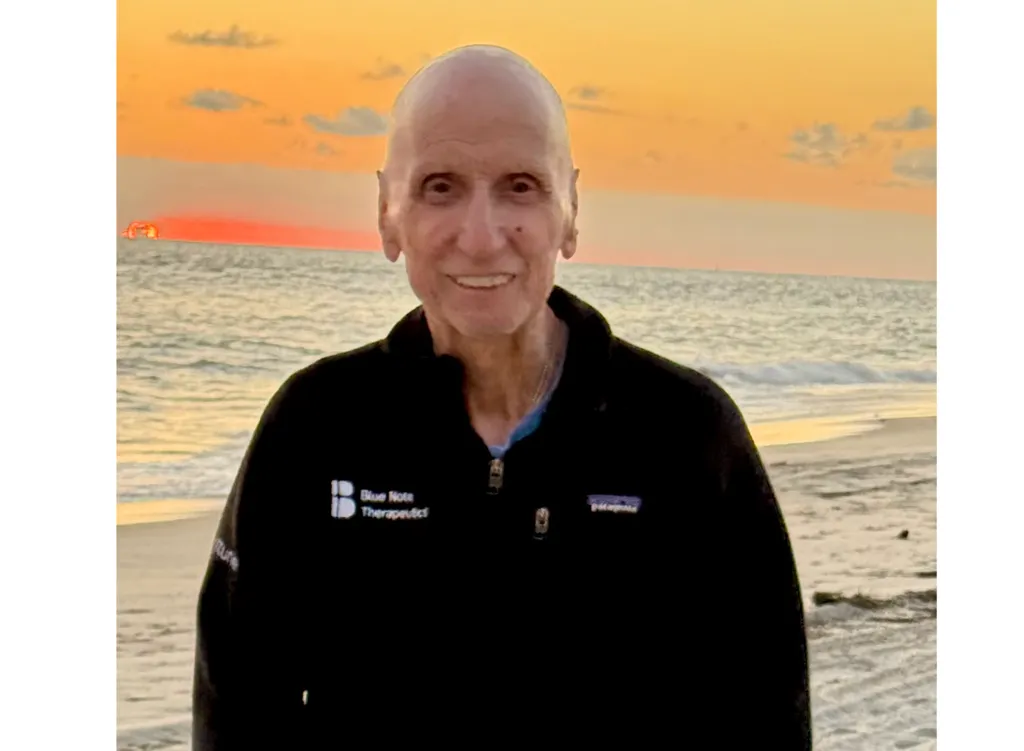Facing AML in Your 60s and Beyond: Exploring Your Treatment Options

A diagnosis of acute myeloid leukemia (AML) can be daunting at any age. But it can be especially overwhelming if you’re over 60 years old and have been turning to Doctor Google for all your answers. While the statistics might seem discouraging at first glance, there has been an explosion of treatment options for AML over the past years, with many of them showing improvements in survival for older patients who may not be candidates for traditional chemotherapy.
Understanding Your Treatment Options
Before 2017, options were limited for those deemed unfit for intensive chemotherapy. Today, the landscape has changed dramatically. Each AML case is unique, and treatment decisions should be made in consultation with your healthcare team. Here, we outline some treatment options available to AML patients over 60, empowering you to have informed discussions with your doctor.
7 + 3 Chemotherapy: The Traditional Approach
The 7 + 3 regimen, combining cytarabine with an anthracycline (daunorubicin or idarubicin), has long been the standard treatment for AML. While it can be taxing, age alone doesn't exclude you from this option. Someone may be deemed unfit for this treatment option if they are too frail or if they have various medical conditions that could be worsened as a result of the treatment. If you're in good health and without significant medical concerns, 7 + 3 might be viable.
Considering a Bone Marrow Transplant
Depending on your overall health, support system, genetic profile, and personal preferences, a bone marrow transplant could be an option. Discuss with your doctor whether this is a suitable path for you. You can learn more about the entire procedure from experts at HealthTree University.
Learn about stem cell transplant
Venetoclax + Azacitidine: Combining Chemo with Targeted Therapy
Combining venetoclax (Venclexta, Abbvie) with azacitidine has shown improved survival rates and remission compared to azacitidine alone, which was once the standard for older, medically unfit patients. In the clinical trial, 37% of patients treated with the combination underwent complete remission, and responses translated into 15 months of median overall survival (meaning that half of the patients survived for at least 15 months since starting the treatment).
This treatment is often continued for as long as the patient is responding and tolerating treatment. However, it may be necessary to pause in between cycles to allow for a recovery of blood counts. The main side effects of this combination are low blood cell counts (with or without fever), fatigue, and mild to moderate gastrointestinal issues like nausea, vomiting, and diarrhea.
Personalized Options for Patients with IDH Mutations
For patients with IDH mutations, targeted treatments like ivosidenib (Tibsovo, Servier) and enasidenib (Idhifa, BMS and Servier) offer new treatment possibilities. Ivosidenib, particularly effective for IDH1 mutations, is approved for older adults and those unable to undergo intensive chemotherapy. Enasidenib is available for relapsed AML with IDH2 mutations.
For IDH1-mutated AML, ivosidenib achieved a complete response rate of 30% and was well tolerated. When combined with azacitidine, ivosidenib achieved a 61% complete remission rate and was also well tolerated. Ivosidenib is approved explicitly for adults older than 75 years old, and it was later approved to be administered alone or in combination with azacitidine for patients with newly diagnosed AML in adults older than 75 and for those who cannot go through 7+3 chemotherapy.
Enasidenib is for IDH2-mutated AML, achieved 23% of complete remissions, and tolerated well. It has been approved since 2017 for adults with relapsed or refractory AML with an IDH2 mutation.
Low-Dose Cytarabine Combinations: Expanding Options
With Venetoclax
This combination improves remission and survival rates compared to low-dose cytarabine alone, offering a viable option for older or medically unfit patients with newly diagnosed AML.
With Glasdegib
Glasdegib (Daurismo, Pfizer) is an oral hedgehog pathway inhibitor and is effective for newly diagnosed AML. This combination has been shown to improve overall survival and complete remission rates compared to low-dose cytarabine alone. Glasdegib is FDA-approved for the treatment of newly diagnosed AML in medically unfit adults or those who are over the age of 75 years old.
Immunotherapy to Treat AML: Gemtuzumab ozogamicin
Gemtuzumab ozogamicin (GO, Mylotarg, Pfizer) is an anti-CD33 antibody-drug conjugate used by itself or combined with chemotherapy. GO is FDA-approved as a single agent for newly diagnosed or relapsed/refractory AML or in combination with chemotherapy in both adults and children. It is used in patients who have CD-33 expressing leukemic blasts. When given to adults with leukemia cells expressing CD33 in combination with chemotherapy, there was a 44% significant reduction in the risk of induction failure, relapse, or death.
Exploring Clinical Trials
Many clinical trials are currently being done on AML, assessing different combinations of the therapies discussed above and exploring new ones. A clinical trial can be an excellent option for many older adults. Discussing clinical trials as an option with your doctor is important to weigh the pros and cons of the treatments discussed above and the options available in clinical trials.
You can check the clinical trials recruiting patients with AML with HealthTree's Clinical Trial Finder.
Progress Toward a Cure for All
The expanding arsenal of AML treatments is promising, especially for older patients who cannot tolerate intensive chemotherapy. While a universal cure remains a goal, recent advancements and ongoing clinical trials offer hope and new possibilities for those diagnosed with AML.
Take Charge of Your Health Journey
Empower yourself by creating a free account on HealthTree Cure Hub. Explore personalized treatment options and clinical trials, track your disease and lab results, and participate in research—all in one place. Join a community dedicated to advancing AML care and improving outcomes. Visit HealthTree Cure Hub and become a Cure Contributor today!
Sources:
- Treatment of Acute Myeloid Leukemia in Older Adults
- Azacitidine and Venetoclax in Previously Untreated Acute Myeloid Leukemia
- Mutant Isocitrate Dehydrogenase 1 Inhibitor Ivosidenib in Combination With Azacitidine for Newly Diagnosed Acute Myeloid Leukemia
- Ivosidenib induces deep durable remissions in patients with newly diagnosed IDH1-mutant acute myeloid leukemia
- Gemtuzumab ozogamicin for de novo acute myeloid leukemia: final efficacy and safety updates from the open-label, phase III ALFA-0701 trial
- Tibsovo for patients with AML
- Idhifa for patients with AML
- Daurismo for patients and caregivers
- Mylotarg Medical Information
A diagnosis of acute myeloid leukemia (AML) can be daunting at any age. But it can be especially overwhelming if you’re over 60 years old and have been turning to Doctor Google for all your answers. While the statistics might seem discouraging at first glance, there has been an explosion of treatment options for AML over the past years, with many of them showing improvements in survival for older patients who may not be candidates for traditional chemotherapy.
Understanding Your Treatment Options
Before 2017, options were limited for those deemed unfit for intensive chemotherapy. Today, the landscape has changed dramatically. Each AML case is unique, and treatment decisions should be made in consultation with your healthcare team. Here, we outline some treatment options available to AML patients over 60, empowering you to have informed discussions with your doctor.
7 + 3 Chemotherapy: The Traditional Approach
The 7 + 3 regimen, combining cytarabine with an anthracycline (daunorubicin or idarubicin), has long been the standard treatment for AML. While it can be taxing, age alone doesn't exclude you from this option. Someone may be deemed unfit for this treatment option if they are too frail or if they have various medical conditions that could be worsened as a result of the treatment. If you're in good health and without significant medical concerns, 7 + 3 might be viable.
Considering a Bone Marrow Transplant
Depending on your overall health, support system, genetic profile, and personal preferences, a bone marrow transplant could be an option. Discuss with your doctor whether this is a suitable path for you. You can learn more about the entire procedure from experts at HealthTree University.
Learn about stem cell transplant
Venetoclax + Azacitidine: Combining Chemo with Targeted Therapy
Combining venetoclax (Venclexta, Abbvie) with azacitidine has shown improved survival rates and remission compared to azacitidine alone, which was once the standard for older, medically unfit patients. In the clinical trial, 37% of patients treated with the combination underwent complete remission, and responses translated into 15 months of median overall survival (meaning that half of the patients survived for at least 15 months since starting the treatment).
This treatment is often continued for as long as the patient is responding and tolerating treatment. However, it may be necessary to pause in between cycles to allow for a recovery of blood counts. The main side effects of this combination are low blood cell counts (with or without fever), fatigue, and mild to moderate gastrointestinal issues like nausea, vomiting, and diarrhea.
Personalized Options for Patients with IDH Mutations
For patients with IDH mutations, targeted treatments like ivosidenib (Tibsovo, Servier) and enasidenib (Idhifa, BMS and Servier) offer new treatment possibilities. Ivosidenib, particularly effective for IDH1 mutations, is approved for older adults and those unable to undergo intensive chemotherapy. Enasidenib is available for relapsed AML with IDH2 mutations.
For IDH1-mutated AML, ivosidenib achieved a complete response rate of 30% and was well tolerated. When combined with azacitidine, ivosidenib achieved a 61% complete remission rate and was also well tolerated. Ivosidenib is approved explicitly for adults older than 75 years old, and it was later approved to be administered alone or in combination with azacitidine for patients with newly diagnosed AML in adults older than 75 and for those who cannot go through 7+3 chemotherapy.
Enasidenib is for IDH2-mutated AML, achieved 23% of complete remissions, and tolerated well. It has been approved since 2017 for adults with relapsed or refractory AML with an IDH2 mutation.
Low-Dose Cytarabine Combinations: Expanding Options
With Venetoclax
This combination improves remission and survival rates compared to low-dose cytarabine alone, offering a viable option for older or medically unfit patients with newly diagnosed AML.
With Glasdegib
Glasdegib (Daurismo, Pfizer) is an oral hedgehog pathway inhibitor and is effective for newly diagnosed AML. This combination has been shown to improve overall survival and complete remission rates compared to low-dose cytarabine alone. Glasdegib is FDA-approved for the treatment of newly diagnosed AML in medically unfit adults or those who are over the age of 75 years old.
Immunotherapy to Treat AML: Gemtuzumab ozogamicin
Gemtuzumab ozogamicin (GO, Mylotarg, Pfizer) is an anti-CD33 antibody-drug conjugate used by itself or combined with chemotherapy. GO is FDA-approved as a single agent for newly diagnosed or relapsed/refractory AML or in combination with chemotherapy in both adults and children. It is used in patients who have CD-33 expressing leukemic blasts. When given to adults with leukemia cells expressing CD33 in combination with chemotherapy, there was a 44% significant reduction in the risk of induction failure, relapse, or death.
Exploring Clinical Trials
Many clinical trials are currently being done on AML, assessing different combinations of the therapies discussed above and exploring new ones. A clinical trial can be an excellent option for many older adults. Discussing clinical trials as an option with your doctor is important to weigh the pros and cons of the treatments discussed above and the options available in clinical trials.
You can check the clinical trials recruiting patients with AML with HealthTree's Clinical Trial Finder.
Progress Toward a Cure for All
The expanding arsenal of AML treatments is promising, especially for older patients who cannot tolerate intensive chemotherapy. While a universal cure remains a goal, recent advancements and ongoing clinical trials offer hope and new possibilities for those diagnosed with AML.
Take Charge of Your Health Journey
Empower yourself by creating a free account on HealthTree Cure Hub. Explore personalized treatment options and clinical trials, track your disease and lab results, and participate in research—all in one place. Join a community dedicated to advancing AML care and improving outcomes. Visit HealthTree Cure Hub and become a Cure Contributor today!
Sources:
- Treatment of Acute Myeloid Leukemia in Older Adults
- Azacitidine and Venetoclax in Previously Untreated Acute Myeloid Leukemia
- Mutant Isocitrate Dehydrogenase 1 Inhibitor Ivosidenib in Combination With Azacitidine for Newly Diagnosed Acute Myeloid Leukemia
- Ivosidenib induces deep durable remissions in patients with newly diagnosed IDH1-mutant acute myeloid leukemia
- Gemtuzumab ozogamicin for de novo acute myeloid leukemia: final efficacy and safety updates from the open-label, phase III ALFA-0701 trial
- Tibsovo for patients with AML
- Idhifa for patients with AML
- Daurismo for patients and caregivers
- Mylotarg Medical Information

about the author
Katie Braswell
Katie joined HealthTree as the Community Director for AML in 2021 and became HealthTree's Director of Education in 2023. Katie is a registered dietitian who is passionate about health literacy and patient empowerment. She loves to cook, travel and spend time with her newborn son, husband and dog.
More on Navigating Your Health
Trending Articles

Get the Latest Acute Myeloid Leukemia Updates, Delivered to You.
By subscribing to the HealthTree newsletter, you'll receive the latest research, treatment updates, and expert insights to help you navigate your health.
Together we care.
Together we cure.
3x Faster.










